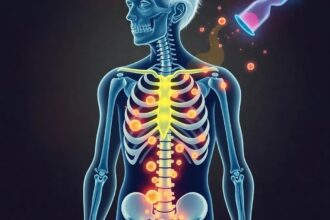Explore the science behind intermittent fasting, its health benefits, potential risks, and practical tips for incorporating it into your lifestyle.
Intermittent fasting has gained popularity for its potential health benefits, but understanding its science, risks, and practical application is crucial.
Introduction to Intermittent Fasting
Intermittent fasting (IF) has emerged as a popular dietary approach, with proponents claiming benefits ranging from weight loss to improved brain function. But what does the science say? This article delves into the mechanisms, benefits, and risks of IF, offering practical guidelines for those considering this lifestyle change.
What is Intermittent Fasting?
Intermittent fasting involves cycling between periods of eating and fasting. Common protocols include the 16/8 method (16 hours of fasting, 8 hours of eating) and the 5:2 diet (eating normally for five days and restricting calories for two). According to Dr. Jason Fung, a nephrologist and author of The Obesity Code
, Intermittent fasting helps regulate insulin levels, which is key to weight management and overall health.
Health Benefits of Intermittent Fasting
Research suggests that IF can lead to weight loss by reducing calorie intake and boosting metabolism. A 2019 study published in New England Journal of Medicine
found that IF improves insulin sensitivity, reduces inflammation, and enhances brain function. Dr. Mark Mattson, a neuroscientist at Johns Hopkins University, states, Fasting triggers cellular repair processes and may protect against neurodegenerative diseases like Alzheimer’s.
Risks and Challenges
While IF offers numerous benefits, it is not suitable for everyone. Individuals with diabetes, eating disorders, or pregnant women should consult a healthcare provider before starting. Common challenges include hunger, fatigue, and difficulty maintaining the fasting schedule. Nutritionist Dr. Rhonda Patrick advises, Start slowly and listen to your body. Hydration and nutrient-dense meals are crucial during eating windows.
Practical Guidelines for Intermittent Fasting
To safely incorporate IF into your lifestyle, consider the following tips:
- Choose a fasting protocol that fits your schedule and health goals.
- Stay hydrated and consume electrolytes during fasting periods.
- Focus on nutrient-dense foods during eating windows to meet your nutritional needs.
- Monitor your energy levels and adjust your fasting schedule as needed.
Conclusion
Intermittent fasting can be a powerful tool for improving health, but it requires careful planning and consideration of individual needs. By understanding the science and following practical guidelines, you can harness the benefits of IF while minimizing risks.




